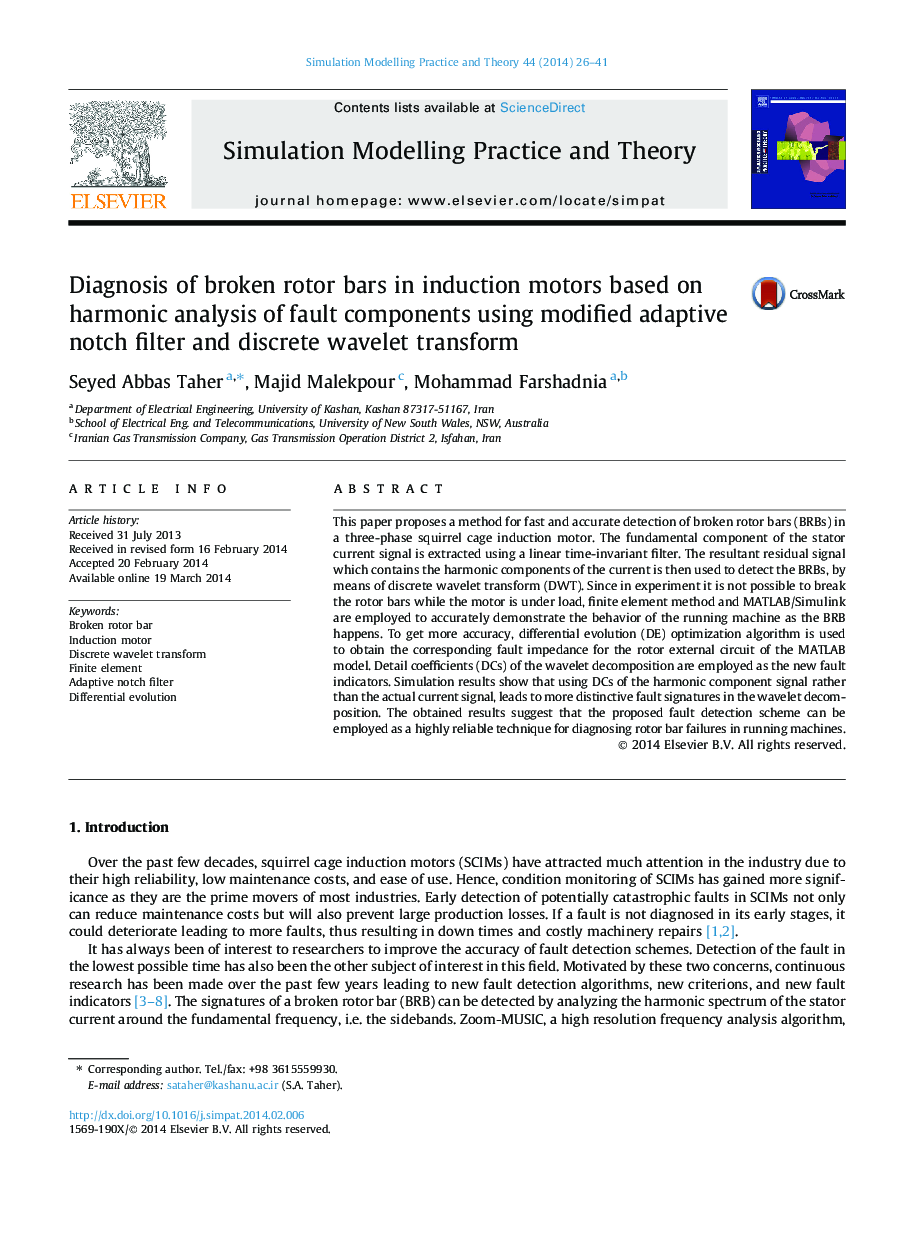| Article ID | Journal | Published Year | Pages | File Type |
|---|---|---|---|---|
| 492179 | Simulation Modelling Practice and Theory | 2014 | 16 Pages |
•Bar failure and breakage was modeled by FE analysis in MATLAB/simulink environment.•DE optimization algorithm was used to obtain the corresponding faulty impedance.•A fast detecting broken rotor bar in SCIM was proposed using DWT and modified ANF.•Detail coefficients of wavelet decomposition were employed as new fault indicators.•Fault detection was a highly reliable technique for diagnosing rotor bar failure.
This paper proposes a method for fast and accurate detection of broken rotor bars (BRBs) in a three-phase squirrel cage induction motor. The fundamental component of the stator current signal is extracted using a linear time-invariant filter. The resultant residual signal which contains the harmonic components of the current is then used to detect the BRBs, by means of discrete wavelet transform (DWT). Since in experiment it is not possible to break the rotor bars while the motor is under load, finite element method and MATLAB/Simulink are employed to accurately demonstrate the behavior of the running machine as the BRB happens. To get more accuracy, differential evolution (DE) optimization algorithm is used to obtain the corresponding fault impedance for the rotor external circuit of the MATLAB model. Detail coefficients (DCs) of the wavelet decomposition are employed as the new fault indicators. Simulation results show that using DCs of the harmonic component signal rather than the actual current signal, leads to more distinctive fault signatures in the wavelet decomposition. The obtained results suggest that the proposed fault detection scheme can be employed as a highly reliable technique for diagnosing rotor bar failures in running machines.
